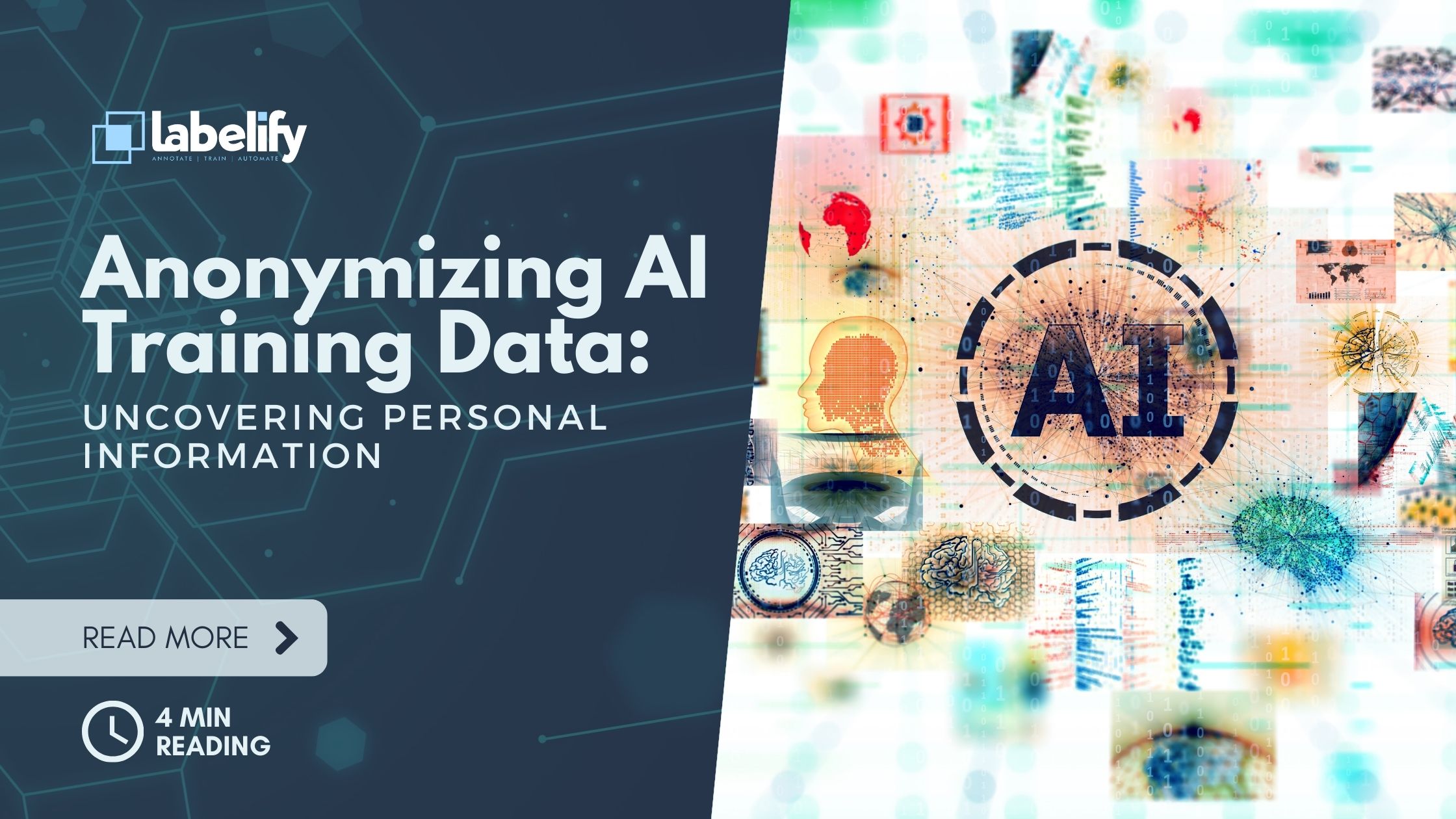Welcome to our groundbreaking article, where we embark on an extraordinary journey to uncover the concealed truths within AI datasets.
Join us as we unravel the enigmatic world of personal information hidden within these datasets, and reveal the imperative need to safeguard it.
As technology rapidly advances, we must comprehend the implications of personal identifiable information (PII) and its presence in these datasets.
Prepare to liberate your knowledge and discover the transformative measures required to protect personal information in the realm of AI.
Key Takeaways
- Personal Identifiable Information (PII) includes information that can directly or indirectly identify an individual, such as full names, addresses, emails, and birth dates.
- Data repositories like customer data and biometric data often contain PII.
- Regular expressions (regex) are commonly used to detect PII in datasets, but large language models (LLMs) and foundation models offer enhanced detection capabilities.
- Detecting and removing PII from AI data is crucial for data security, compliance, and building trust with customers.
What Is Personal Identifiable Information (Pii)
In our exploration of personal identifiable information (PII), we must understand its nature and implications.
PII is any data that can directly or indirectly identify an individual. It includes information like names, addresses, emails, and phone numbers. PII can be found in various datasets, such as customer data and user-generated content.
Detecting PII in datasets poses challenges, especially in unstructured data. Regular expressions (regex) are commonly used to detect PII, but they may miss variations and context. However, large language models (LLMs) and foundation models offer more advanced PII detection capabilities.
Anonymizing PII in datasets is another crucial aspect, and methods for doing so must be explored.
Presence of PII in AI Datasets
We uncover PII lurking within AI datasets.
Detecting PII in AI datasets poses both challenges and solutions. The vast amounts of data used in AI models increase the likelihood of PII being present. Regular expressions have been commonly used to detect PII, but they may miss context and variations.
However, large language models (LLMs) and foundation models offer enhanced PII detection capabilities. These models understand language context and can differentiate between PII and common data points.
Detecting and removing PII from AI data is crucial to prevent the devastating impact of breaches on individuals and organizations. Case studies and lessons learned from previous breaches emphasize the importance of data security and compliance.
Examples of PII in Datasets
As we delve deeper into the presence of PII in AI datasets, let's explore a few concrete examples of personal identifiable information that can be found within these datasets.
Detecting PII in unstructured text data poses significant challenges, especially when dealing with large datasets. However, it's crucial to accurately identify PII to protect individuals' privacy and comply with data protection regulations.
Examples of PII that can be found in datasets include names, email addresses, contact details, and even biometric data such as fingerprints and facial recognition. Personal information can be extracted from various sources, such as customer welcome messages, product reviews, social media profiles, and user-generated content like posts and comments.
Overcoming the challenges of accurately identifying PII in large datasets is essential for ensuring data security and promoting the liberation of individuals from potential privacy breaches.
Methods for Detecting PII in Datasets
Detecting PII in datasets requires employing effective methods. Here are some innovative detection techniques we can use:
- Regular expressions (regex): This commonly used method searches for predefined patterns to identify PII. However, it may miss context and variations, posing challenges in identifying PII accurately.
- Large language models (LLMs) and foundation models: These advanced models offer enhanced PII detection capabilities. LLMs can understand language context and differentiate between PII and common data points. Foundation models learn from extensive data, enabling them to identify unconventional or subtle presentations of PII.
Challenges in identifying PII include variations in data formats, evolving privacy regulations, and the sheer volume of data to analyze. Overcoming these challenges is essential to ensure data security and compliance, and to foster trust with customers in this data-driven world of liberation.
Importance of Detecting and Removing PII in AI Data
To ensure data security and compliance, it's crucial for organizations to detect and remove personal identifiable information (PII) from AI datasets. In today's world, where data privacy regulations are becoming increasingly stringent, the implications of PII exposure in AI models can't be ignored.
Data breaches can lead to severe consequences, including identity theft and fraud, causing significant financial losses and harm to individuals. By proactively detecting and removing PII from AI data, organizations can't only protect the privacy of individuals but also ensure ethical and legal use of personal data. This builds trust with customers and fosters a successful business reputation.
Implementing robust data governance strategies is essential to identify, manage, and safeguard PII across diverse data sources, preventing costly and disastrous data breaches.
Data Breaches and the Need for PII Protection
Implementing robust data governance strategies is essential for organizations to protect against data breaches and ensure the protection of personal identifiable information (PII). Failure to do so can have severe consequences, including identity theft, financial losses, and damage to an organization's reputation.
To address this issue, organizations must employ effective PII detection techniques to identify and remove sensitive information from their datasets. Here are three key considerations in PII protection:
- Stay informed about data breach consequences to understand the potential risks and impacts on individuals and organizations.
- Utilize advanced PII detection techniques, such as regular expressions and large language models, to accurately identify and remove sensitive information.
- Implement comprehensive data governance strategies that encompass data security, compliance, and ethical use of personal data.
Ensuring Compliance With Data Protection Regulations
We must understand the importance of complying with data protection regulations to ensure the responsible handling of personal data in the age of AI. In order to address data protection compliance challenges and protect individuals' privacy, organizations must adopt best practices for data anonymization. Data anonymization involves removing or modifying personal identifiers from datasets to minimize the risk of re-identification. By doing so, organizations can protect the privacy of individuals while still utilizing their data for AI purposes.
To help you fully grasp the concept of data protection compliance and best practices for data anonymization, here is a table outlining some key considerations:
| Data Protection Compliance Challenges | Best Practices for Data Anonymization |
|---|---|
| Ensuring compliance with data protection regulations | Implementing robust data governance strategies |
| Identifying and managing personal identifiable information (PII) | Utilizing advanced techniques like differential privacy and k-anonymity |
| Safeguarding data across diverse sources | Conducting regular data audits and risk assessments |
| Balancing data utility and privacy | Employing data de-identification techniques such as generalization, suppression, and perturbation |
| Staying up-to-date with evolving regulations | Engaging legal and privacy experts to navigate complex compliance requirements |
Safeguarding PII to Build Trust With Customers
Safeguarding personal identifiable information (PII) is crucial for building trust with customers. In today's data-driven world, customers desire liberation and expect organizations to prioritize their data privacy. To achieve this, organizations must implement effective measures to protect PII and comply with data privacy regulations.
Here are three essential steps for safeguarding PII and building trust with customers:
- Implement robust data privacy regulations: Organizations should adhere to data privacy regulations such as GDPR and CCPA to ensure the ethical and lawful use of personal information.
- Utilize PII anonymization techniques: Employing effective PII anonymization techniques like tokenization or data masking can protect customer data while still allowing its use for AI models.
- Foster transparency and communication: Openly communicate with customers about data privacy policies, practices, and how their PII is protected. This fosters trust and reassures customers that their information is handled responsibly.
Frequently Asked Questions
How Can Regular Expressions (Regex) Be Used to Detect PII in Datasets?
Using regex for pattern matching, we can detect PII in datasets by searching for predefined patterns like email addresses, phone numbers, and social security numbers.
However, regex can sometimes produce false positives, identifying non-PII data as sensitive information.
To handle this, we can refine our regex patterns, incorporate additional validation checks, and utilize machine learning algorithms to improve accuracy.
What Are the Limitations of Using Regex to Detect PII in Datasets?
When it comes to detecting PII in datasets, regex has its limitations. Accuracy and scalability are two key concerns.
Regex searches for predefined patterns, but it may miss context and variations, leading to false positives or negatives. Moreover, regex alone disregards ethical considerations and privacy concerns.
To overcome these limitations, we need innovative solutions that prioritize accuracy, scalability, and address the ethical and privacy aspects.
Liberating data requires a visionary approach that ensures data protection while enabling valuable insights.
How Do Large Language Models (Llms) and Foundation Models Enhance PII Detection Capabilities?
Large language models (LLMs) and foundation models enhance pii detection capabilities by understanding language context and identifying unconventional or subtle presentations of PII. These advanced techniques go beyond regular expressions to accurately detect and preserve privacy in datasets.
Why Is It Important to Detect and Remove PII From AI Data for Data Security and Compliance?
Detecting and removing PII from AI data is crucial for data security and compliance. We understand the challenges and solutions involved in detecting PII in AI datasets.
The exposure of PII in AI datasets can have a significant impact on data privacy and security. It's important to prioritize the ethical and legal use of personal information to build trust with customers and safeguard against data breaches.
Our innovative approach ensures robust data governance and protects individuals' privacy in today's data-driven world.
How Can Organizations Build Trust With Customers by Safeguarding PII in AI Datasets?
Building customer trust is essential for organizations. Safeguarding personal identifiable information (PII) in AI datasets plays a crucial role in this regard. By implementing robust data privacy measures, such as detecting and removing PII, organizations demonstrate their commitment to data security and compliance. This fosters trust with customers, assuring them that their personal information is handled ethically and legally.
Building a strong reputation in today's data-driven world requires organizations to prioritize data privacy and take proactive steps to protect customer information.
Conclusion
As we delve into the hidden world of personal information in AI datasets, it becomes clear that detecting and removing personal identifiable information (PII) is paramount. By utilizing methods such as regular expressions and large language models, we can safeguard data security and compliance while building trust with customers.
The importance of robust data governance strategies can't be overstated, as they ensure PII protection and compliance with data protection regulations. Let's embrace these measures and create a future where personal information is truly safe in the realm of AI.




